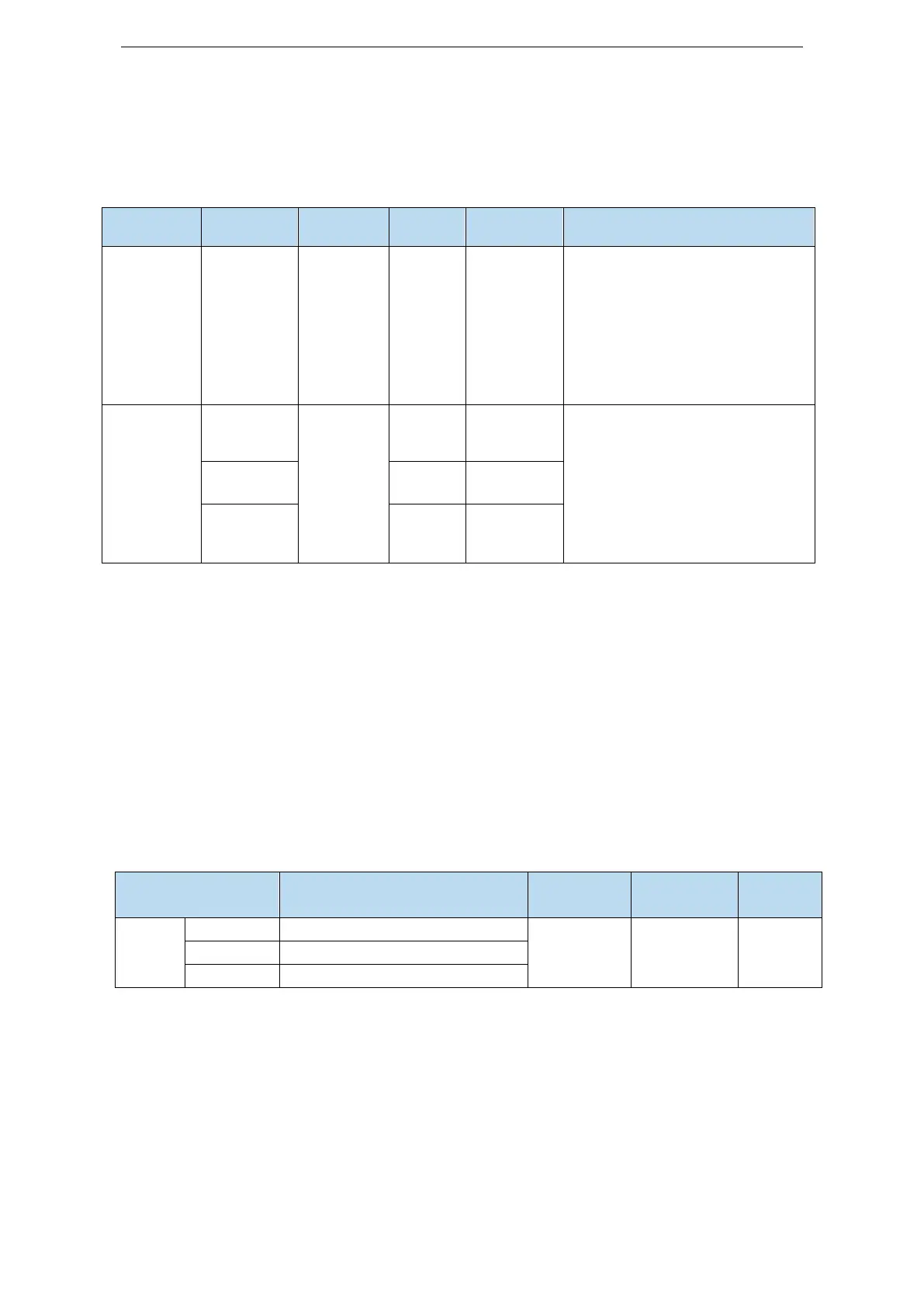116
6.1.2 The difference of these adjustment modes
Adjustment modes are divided into adaptive and auto-tuning, and their control algorithms and
parameters are independent. Among them, the auto-tuning mode is divided into three functions: fast
adjustment, automatic adjustment and manual adjustment. The three functions are the same in essence
but different in implementation. Refer to the corresponding chapters of each function.
P2-05 adaptive speed loop gain
P2-10 adaptive speed loop integral
P2-11 adaptive position loop gain
P2-07 adaptive inertia ratio
P2-08 adaptive speed observer gain
P2-12 adaptive stable max inertia
ratio
P0-07 first inertia ratio
P1-00 speed loop gain
P1-01 speed loop integral
P1-02 position loop gain
P2-35 Torque instruction filtering
time constant 1
P2-49 Model loop gain
6.1.3 Model loop control
In the auto-tuning mode, besides the gain of speed loop and position loop, there is also the gain of
model loop, which has a great influence on the servo responsiveness. When the model loop is not open,
the servo responsiveness is determined by the gain of the position loop, and when the model loop is
open, the servo responsiveness is determined by the gain of the model loop. The model loop is
equivalent to feed-forward function in the driver control loop, and its specific function refers to chapter
6.5 manual adjustment.
When the auto-tuning mode is soft, the function of the model loop will automatically turn off; when the
auto-tuning mode is fast positioning or fast positioning (control overshoot), the function of the model
loop will automatically turn on.
Auto-tuning mode
fast positioning (control overshoot)
Selection of auto-tuning mode:
① Soft (P2-02.0 = 1):
This method does not turn on the gain of the model ring, and is suitable for the occasion of
insufficient mechanical rigidity and low response requirements.
② Fast positioning (P2-02.0 = 2):
In this way, the response of setting parameters is the fastest, but there is no special suppression to
overshoot.
③ Fast positioning (control overshoot) (P2-02.0 = 3):
In this way, the response of setting parameters is fast, and the overshoot is restrained.

